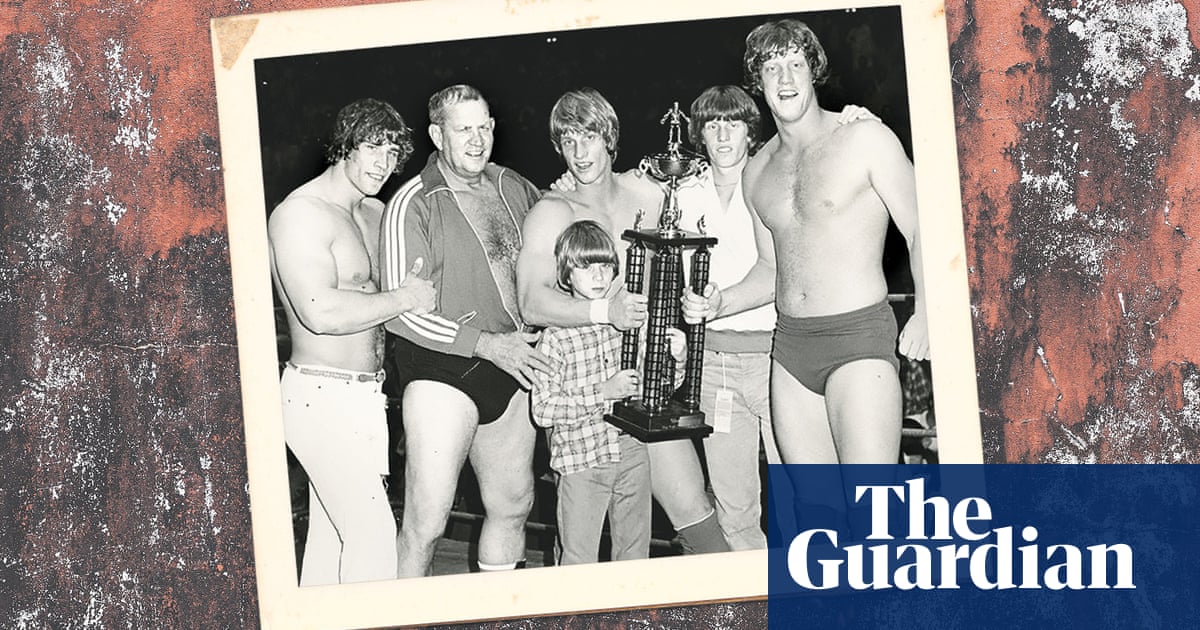
Max Ayres has a hole in his head. Well, his self-portrait does. He’d like to fix it, but there’s a great big gash in the canvas. As he steps into his living room, the corner of the ceiling droops down in a great triangle. The walls around him are black. He faces another self-portrait where flames have stripped away his entire body. Each wall of his modest council flat is covered with paintings – self-portraits, still lifes, some stored, some hung. Ayres has more than 1,000 in total – and most are now burnt.
“I don’t like to say the phrase ‘got on like a house on fire’ any more,” he tells me. He was relocated in February after his flat caught fire while he was in hospital, yet in late September with the threat of autumn looming, he’s still there. “This is supposed to be temporary,” he says, as he shows me around, “but it’s not temporary enough. It’s an insult to buildings.”
Ayres has never “made it” as an artist. Probably because he refuses to make any money from his works. “Never sold a painting,” he says unashamedly. “You don’t make money out of a natural ability. I don’t do it for money; I do it for art and for people. And, if I started making money, I’d have to register for income tax.”
The blaze made quick work of the art stored in Ayres’s flat: paintbrushes burned like dry straw, oil paintings melted to the walls. The results are shocking, like accidental works of Francis Bacon or details from Goya’s black paintings. One self-portrait leaves Ayres unrecognisable as it oozes with black bubbles, others have their canvases cracked and broken from the scorching heat of the fire.
Art first entered Ayres’s life at the age of eight after he walked into a field with a sketchpad and pen and drew his neighbour’s goats. He never moved away from his home town of Leigh, Greater Manchester, and never formally trained. At 72, he has never been abroad, never married and never stopped painting.
A life of bad luck has seemed to follow Ayres. His childhood was afflicted by measles, chickenpox and earaches so bad that he’d “scream his head off”. He says he “didn’t have many friends”, though he recalls one acquaintance, David, and how they’d study the moon with a telescope in his back garden. He remembers David asking if people might ever walk on the moon? “Of course not,” Ayres replied, “it’s simply not possible.”
In the 90s, he was kicked out of a library performance of Beethoven by an “ignorant sod” of a porter because he was still covered in paint from his work hours earlier. In 2003, the local press quoted him as being “livid” after Leigh Infirmary binned four paintings he’d donated – and lost 16 others. But all of these events pale in comparison with the death of his father, Joseph Ayres, when Max was just 13 – a topic he avoids if he can help it. Joseph was a master builder and member of the Royal Engineers. Ayres speaks of his father fondly, and a framed portrait of him sits by his television – the only family picture on display.
A 1992 Manchester Evening News interview tells of how Joseph’s death led to a “profound depression” that lingered until Ayres was 28, despite years of psychiatric treatment. He has suffered with intestinal problems from an early age, meaning he “didn’t have the physical resilience to do a job” – though he recounts one stint at the now-defunct Lennon’s supermarket chain. During a shift he divulged he was an artist to a co-worker, who responded by smacking Ayres’s knuckles until they were swollen before declaring: “See if you can paint after that!”
Ayres did paint after that, and in abundance. “Haphazard and casual” is how he describes his output. He may not have had a career, but his work ethic is something to behold. During his younger years he spent countless hours outdoors, painting the many mills and pits across historical Lancashire. His health left him in agony for days at a time, but he’d still relentlessly march out and paint the region’s doomed industrial buildings, capturing them before diggers and men in hi-vis jackets took them apart.
You get the sense Ayres sees his industrial paintings as his true life’s work. Sitting in his armchair, surrounded by brushes and tobacco smoke, he waxes lyrical for some time about the Mayor and Mayoress, two sleeping giant engines that he’d like to paint one day, housed in the renovated Spinners Mill nearby. Cruelly, he was supposed to exhibit his collection there a month before the fire.
“I always wanted to achieve more,” he says. “I always felt I’d underachieved. Because I never learned to drive, I was reliant on other people. I would’ve liked to have gone to the industrial places, but that wasn’t their idea of a holiday.” He had to stop painting industrial buildings in 2013 when he became house-bound. Unable to explore the outside world, he turned to painting himself and the shopping his carers brought him.
Back in December of last year, Ayres found himself stuck in his bathroom, stricken with extreme pneumonia. “I probably would’ve died,” he says. His carers had him sent to hospital and not long later he got the call about the fire.
“I was numbed,” he says. “The first thing I thought was that I wished they could get me down there so I could do something practical. But you’re stuck in hospital and they treat you like you don’t have a life outside.” He was told someone would give him a lift to the flat so he could assess the damage, but they never showed up.
Strangely, Ayres doesn’t feel that lucky that he wasn’t there. “If I’d have been, I probably would have phoned 999 and got some wet towels, gone to the mains and switched the electric off. I want to be productive, rational.”
There has been interest in displaying his portraits, burns and all, but a reluctance hangs over Ayres. Local gallery coordinator Angie Ryan – who’d planned the Spinners show – attempted to raise funds for some of the gigantic collection to be restored, but restoration is laborious and expensive. She tells me how one professional restorer volunteered hours on a single painting, with only a thumbnail-sized corner to show for it.
Ryan tells me of a quirk created by Ayres’s haphazard storage in his flat. Dozens of large landscapes were piled atop one another, and their combined weight forced each painting’s stretcher bar to press against the other canvas below them. When the fire came, the parts of canvas covered by stretcher bars were saved from smoke damage, leaving the impression of large glowing crosses where the smoke didn’t reach. “Like beams of light,” she says. Ayres doesn’t believe in God or religion but it’s a fittingly holy symbol for a man who could easily not be here.
Marketers would call Ayres an outsider artist – he certainly has the hallmarks of a Daniel Johnston or Henry Darger – working away at his craft, unfettered by the world of fine art. And he’d likely sell some paintings that way. But he is far more interested in art and the possibility of human potential, the things that go right: giant engines, men on the moon, paintings rebirthed in fire.
He hopes one day he’ll make good on that failed exhibition, and he’s painting every day to restock his collection. “It represents human achievement,” he says as the sun sets in Leigh. “Before people can achieve things they’ve got to have some sight, some vision – a goal to aim towards. And a belief in the possible.”











